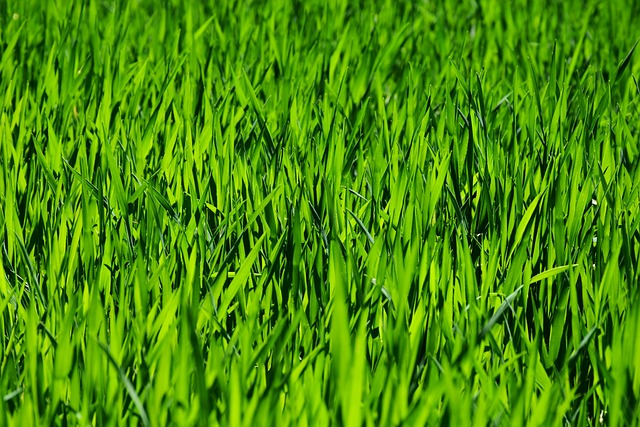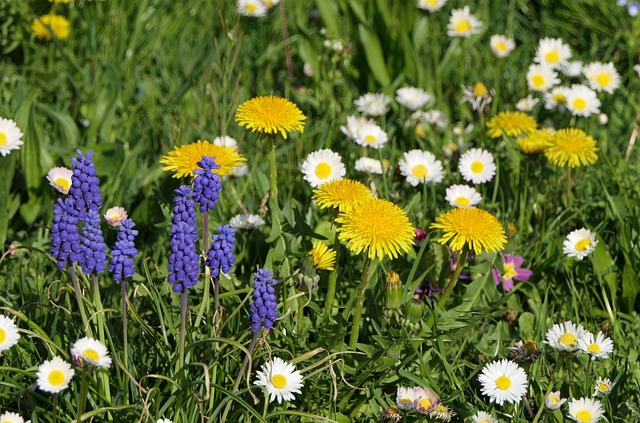Effective lawn care is pivotal for creating a visually stunning and healthy outdoor environment. Key practices include regular watering, strategic fertilization, and weed control to maintain turf health. Mowing at the correct height for your grass type encourages robust root growth and thickens the lawn, naturally deterring weeds. Aeration and overseeding improve soil quality and lawn density, making it more resistant to harsh weather. Aligning these care activities with seasonal changes ensures year-round protection and nourishment for the lawn. Embracing a blend of organic and inorganic methods—like composting and eco-friendly pest management—supports sustainable landscaping. By understanding soil pH, nutrient content, texture, structure, and compaction through soil analysis, lawn care professionals can tailor amendments to optimize plant growth conditions, fostering strong root systems and healthy plant development. Landscaping design should be adaptive to the soil characteristics, using them to create a sustainable and visually appealing landscape that is both easy to maintain and environmentally responsible, adhering to best practices in lawn care and landscaping.
Embark on a journey into the artful fusion of greenery and design with our comprehensive exploration of landscaping design and implementation. This article delves into the nuanced world of lawn care and landscaping, offering a treasure trove of insights for both novices and seasoned enthusiasts. From mastering essential components of effective lawn care to crafting a visually stunning and environmentally harmonious outdoor space, we cover it all. Discover how soil analysis, strategic watering regimes, and organic pest management can transform your yard into a lush sanctuary. Learn to balance hardscapes with softscapes to create an inviting oasis that withstands the seasons. By integrating native plants, eco-friendly solutions like rain gardens, and expert tips on lighting and mulching, you’ll achieve a landscape that’s as functional as it is beautiful. Join us as we navigate through these landscaping design principles to elevate your outdoor living experience.
- Essential Components of Effective Lawn Care Strategies
- 1.1 Soil Analysis and Amendment for Optimal Growth
Essential Components of Effective Lawn Care Strategies

Engaging in effective lawn care is a cornerstone of beautiful landscaping design, contributing significantly to the overall aesthetic and health of your outdoor space. A well-maintained lawn not only enhances curb appeal but also provides a comfortable and inviting environment for relaxation and recreation. Key components of successful lawn care strategies include consistent watering to maintain soil moisture, appropriate fertilization tailored to local soil conditions and grass types, and proactive weed control measures. Regular mowing at the correct height for your specific grass variety aids in promoting root growth and maintaining turf density, which in turn helps to crowd out weeds. Additionally, proper aeration and overseeding can improve soil quality and thicken the lawn, making it more resilient against disease, pests, and high foot traffic. Implementing these practices with diligence and attention to detail will ensure a lush, green, and thriving lawn that serves as a vibrant canvas within your landscaping design.
In conjunction with routine maintenance, understanding the local climate and seasonal changes is crucial for adapting your lawn care regimen effectively. Seasonal adjustments in watering, mowing frequencies, and fertilization timing can protect your lawn from extreme weather conditions and ensure its longevity and vitality throughout the year. Employing a blend of organic and inorganic methods, such as composting for natural soil enrichment and integrating eco-friendly pest management solutions, contributes to sustainable landscaping practices that are both environmentally conscious and beneficial for your lawn’s health. By combining these elements with thoughtful plant selection and strategic lawn layout, your yard can become a harmonious blend of form and function, embodying the essence of successful lawn care and landscape design.
1.1 Soil Analysis and Amendment for Optimal Growth

Lawn Care and landscaping professionals recognize that a solid foundation for any successful landscape begins with understanding and optimizing soil conditions. Conducting a thorough soil analysis is an integral step in this process, as it provides critical information on soil pH levels, nutrient content, texture, structure, and compaction. Based on these findings, amendments can be made to correct imbalances and improve soil fertility. For instance, if the pH is too acidic or alkaline, lime or sulfur may be applied to adjust it to a neutral range, which is conducive to most plants’ growth. Similarly, organic matter such as compost or peat moss can be added to enhance soil structure and improve water retention and drainage. These adjustments are crucial for supporting the root systems of plants, ensuring they have access to essential nutrients like nitrogen, phosphorus, and potassium, which are vital for healthy growth and vibrant landscapes. Landscaping design must take into account the soil’s inherent characteristics to tailor a plan that maximizes the potential of the existing environment, thereby laying a foundation for a thriving landscape that requires less maintenance over time. Understanding soil types and their properties is key to informed decision-making in lawn care and landscaping practices, ultimately leading to a more sustainable and aesthetically pleasing outdoor space.
In wrapping up our exploration of landscaping design and implementation, it’s clear that a well-maintained lawn serves as the cornerstone of a beautiful outdoor space. Key practices like soil analysis and amendment, as detailed in ‘Essential Components of Effective Lawn Care Strategies,’ are pivotal for fostering optimal growth and vibrancy. Homeowners and landscapers alike must prioritize these elements to achieve and sustain a lush, healthy lawn that complements the overall design. By integrating these insights into your lawn care routine, you can ensure your landscape not only stands out in your community but also provides a tranquil, inviting environment for years to come. Remember, the foundation of exceptional landscaping lies in the details of care and attention given to the soil beneath your feet. Landscaping design is more than mere aesthetics; it’s a blend of science and art, requiring knowledgeable lawn care practices to realize its full potential.
